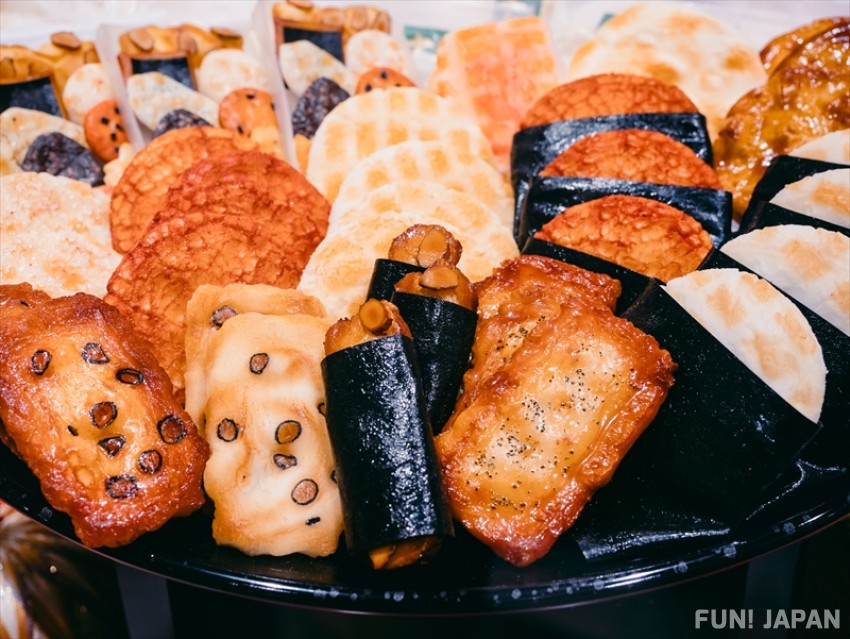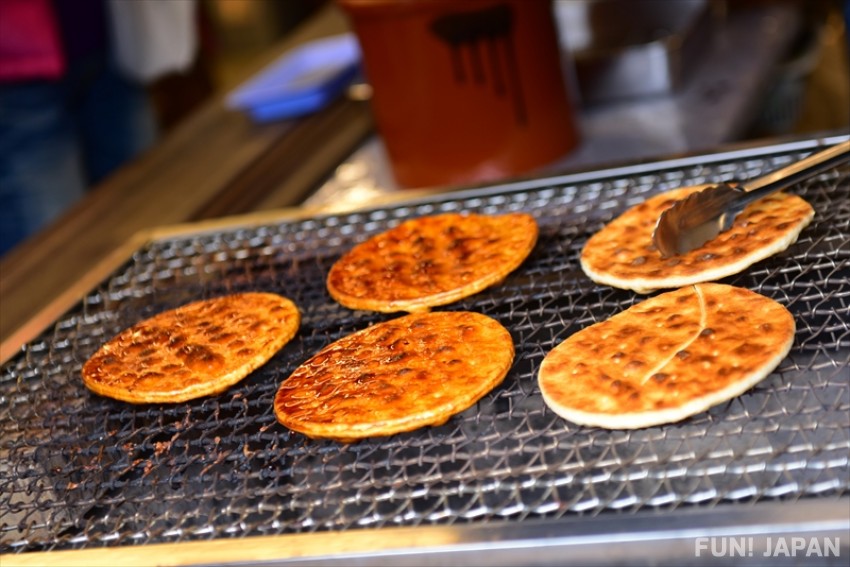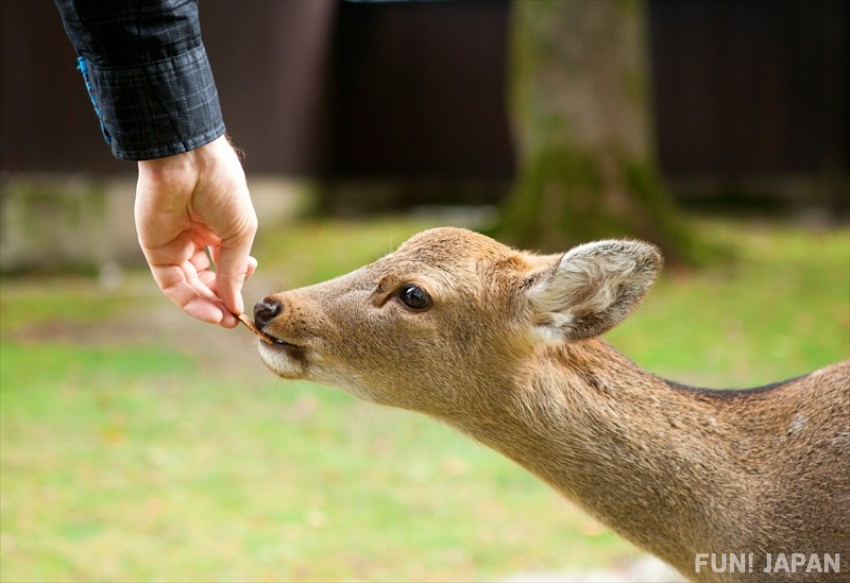
Senbei are a wagashi made by using flour or rice flour which is kneaded, spread out thinly, and then fried on a grill. The senbei pictured above can easily be bought at any supermarket or convenience story in Japan. Let’s take a look into different types of senbei, such as atsuyaki senbei, shoyu senbei, shio senbei, and more.
Senbei Eaten Throughout Japan
There are plenty of varieties of senbei sold in supermarkets and convenience stores throughout Japan at a reasonable price. Let’s learn more about them.
Atsuyaki and Usuyaki Senbei
There are two versions of this senbei: a thick version and a thin version, which are then fried.
Nori Senbei
This senbei is cooked and then wrapped in dried seaweed.
Zarame Senbei
This senbei is cooked and then sprinkled with a coarse sugar called “zarame.”
Satou Senbei
This senbei is cooked, and sprinkled with sugar which is generally melted until it is covered in a white coating.
Nure Senbei
This senbei is cooked and covered with a soy sauce-based sauce. It has a soft and saturated texture with a strong flavor.
Salad Senbei
This senbei is fried in salad oil, sprinkled with salt, and then fried again in salad oil.
Shrimp Senbei
This senbei is made from a starchy flour such as that made from potatoes, then mixed with shrimp and fried.
Senbei”s Use as a Synonym

Senbei are generally made from fluffy rice, but made flat, which makes the word a good synonym to describe things that are flat, like “hiratai” or “pechanko” (words for flat). For example, the word “senbei futon” describes a futon bed that is completely flat. The word “senbei” can be used for many things that are flat and seem hard.
Squid Senbei
The senbei takes fresh squid which is marinated in a sauce made of soy sauce and sugar, coated in flour, and pressed while it is fried. It is a senbei that looks just like the original shape of a squid. White it isn’t made only of flour or rice flour, the finished product has the texture of senbei, thus people categorizing it as senbei.
Cookie-like Senbei
Sweet senbei made from mixing flour, eggs, and sugar and then fried do exist. They are sold at supermarkets and convenience stores, but they are also sold as souvenirs at local shops as well.
Kawara Senbei
These senbei resemble the roofing tiles used on top of Japanese homes. Why do they look like roof tiles? There are various theories on why they look like roof tiles, but one particularly convincing one is that they are sturdy enough to protect a home, just like how a roof does.
Shakushi Senbei
Shakushi senbei are a famous product from Aki of Hiroshima’s Miyajima Island. The shape of these senbei resemble the shape of rice when it is freshly scooped with a rice paddle (shakushi). But why a rice paddle? Supposedly, it has the nuance of capturing one’s enemies. It’s also the same pronunciation as the tool to grab rice (meshi toru).
This rice paddle was created during the warring period in Japan and is a play on words, which also led to the birth of a new snack.
Vocabulary in Japanese That Use the Word Senbei

The following senbei have somewhat of a varied and interesting nuance to those mentioned above.
Teyaki Senbei
These senbei are cooked, one-by-one, by hand as the name suggests (teyaki means “cooked by hand”).
Koware Senbei
These senbei, as the name suggests, are broken (koware means “broken”). These senbei were named koware senbei and sold at a cheaper price because they are the pieces that were broken during the manufacturing process.
Senbei Jiru
You may be thinking, “senbei soup?!” but this is actually a local dish from the southern areas of Japan’s Iwate prefecture. Chicken and vegetables are cooked in a soy sauce-based broth, into which nanbu senbei are broken and thrown in.
Shika Senbei
These aren’t senbei that contain deer meat, but rather senbei that are used as deer feed. Nara prefecture’s Nara Park is a place where you can meet many free-range deer. Shika senbei are a popular item to buy and give as food to deer while sightseeing.
We hope you enjoyed this look into various senbei and learned something new along the way!

Comments